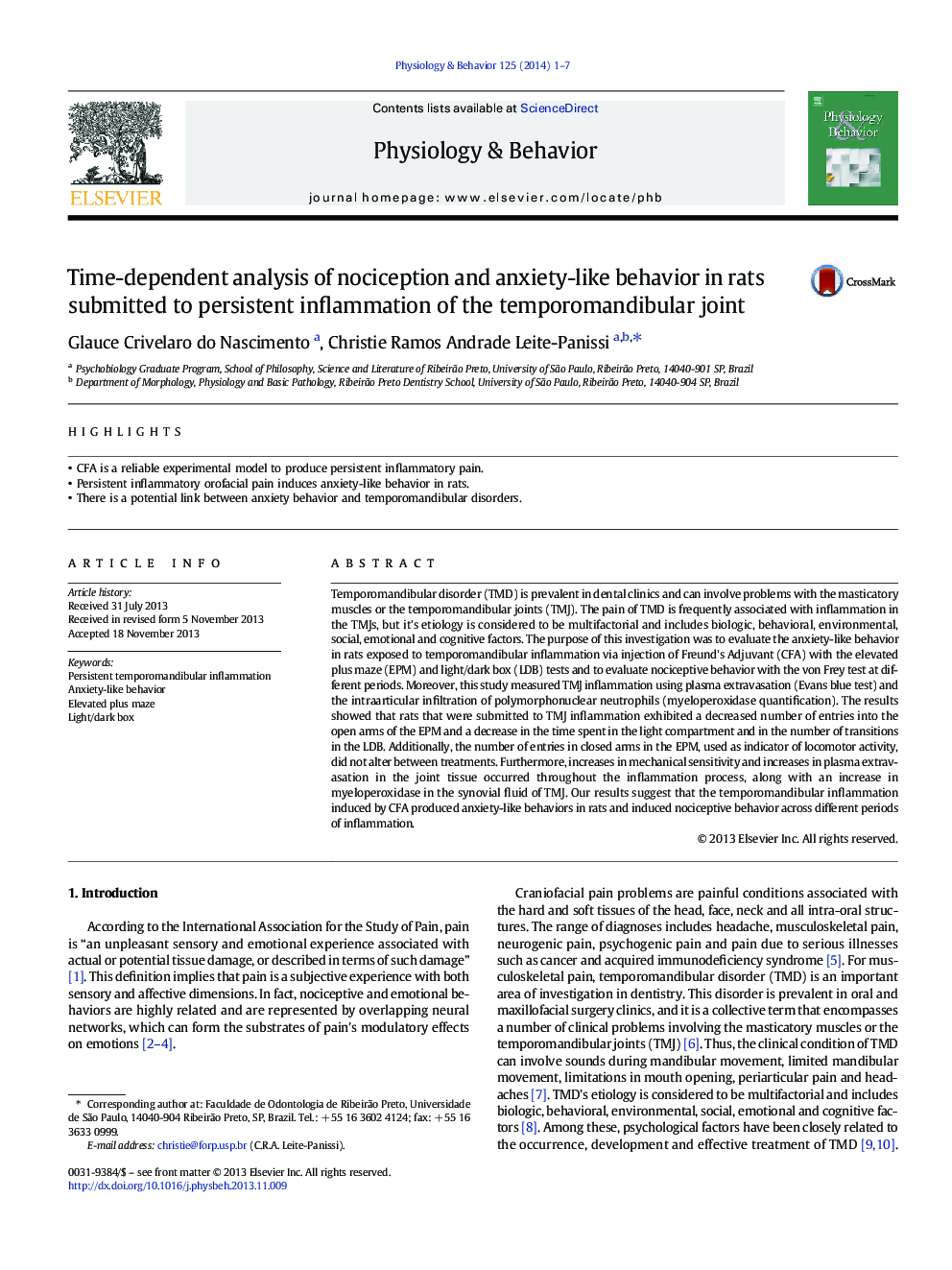| کد مقاله | کد نشریه | سال انتشار | مقاله انگلیسی | نسخه تمام متن |
|---|---|---|---|---|
| 2844305 | 1571192 | 2014 | 7 صفحه PDF | دانلود رایگان |
• CFA is a reliable experimental model to produce persistent inflammatory pain.
• Persistent inflammatory orofacial pain induces anxiety-like behavior in rats.
• There is a potential link between anxiety behavior and temporomandibular disorders.
Temporomandibular disorder (TMD) is prevalent in dental clinics and can involve problems with the masticatory muscles or the temporomandibular joints (TMJ). The pain of TMD is frequently associated with inflammation in the TMJs, but it's etiology is considered to be multifactorial and includes biologic, behavioral, environmental, social, emotional and cognitive factors. The purpose of this investigation was to evaluate the anxiety-like behavior in rats exposed to temporomandibular inflammation via injection of Freund's Adjuvant (CFA) with the elevated plus maze (EPM) and light/dark box (LDB) tests and to evaluate nociceptive behavior with the von Frey test at different periods. Moreover, this study measured TMJ inflammation using plasma extravasation (Evans blue test) and the intraarticular infiltration of polymorphonuclear neutrophils (myeloperoxidase quantification). The results showed that rats that were submitted to TMJ inflammation exhibited a decreased number of entries into the open arms of the EPM and a decrease in the time spent in the light compartment and in the number of transitions in the LDB. Additionally, the number of entries in closed arms in the EPM, used as indicator of locomotor activity, did not alter between treatments. Furthermore, increases in mechanical sensitivity and increases in plasma extravasation in the joint tissue occurred throughout the inflammation process, along with an increase in myeloperoxidase in the synovial fluid of TMJ. Our results suggest that the temporomandibular inflammation induced by CFA produced anxiety-like behaviors in rats and induced nociceptive behavior across different periods of inflammation.
Journal: Physiology & Behavior - Volume 125, 10 February 2014, Pages 1–7
